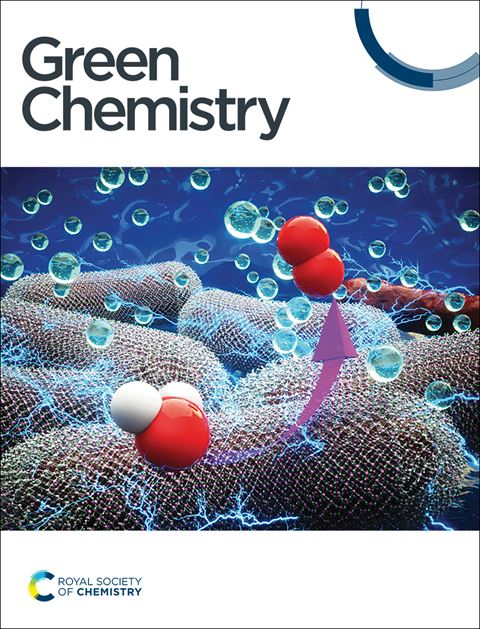用于高性能锂硫电池的分层多孔碳化木纤维中的溶热辅助缺陷工程†。
IF 9.3
1区 化学
Q1 CHEMISTRY, MULTIDISCIPLINARY
引用次数: 0
摘要
本文章由计算机程序翻译,如有差异,请以英文原文为准。
Solvothermal-assisted defect engineering in hierarchically porous carbonized wood fibers for high-performance lithium–sulfur batteries†
The pursuit of carbon neutrality and reduced carbon dioxide emissions has necessitated the development of high-energy-density energy storage devices. To this end, Li–S batteries, with their exceptionally high energy density and theoretical specific capacity, have emerged as promising devices. However, the practical application of Li–S batteries is limited by the poor conductivity of sulfur and the notorious shuttle effect of lithium polysulfides (LPS). Herein, we present a scalable solvothermal-assisted carbonization strategy to engineer micro–mesoporous carbonized wood fibers (MMCWF) with precisely tailored structural defects and hierarchical porosity. Through a solvothermal treatment followed by carbonization, the WF are transformed into a nanostructured carbon material with a high specific surface area, abundant porosity, and one-dimensional hollow architecture. The as-assembled Li–S battery with sulfur-loaded MMCWF delivers an initial discharge capacity of 1389.6 mA h g−1 at 0.1 C. The MMCWF/S cathode exhibits a high-rate capacity of 690.6 mA h g−1 at 4.0 C, and after 800 cycles at 1.0 C, the capacity decay per cycle is only 0.05%. This innovative material design not only provides a new sulfur host for Li–S batteries but also paves the way for the development of future high-performance energy storage devices.
求助全文
通过发布文献求助,成功后即可免费获取论文全文。
去求助
来源期刊

Green Chemistry
化学-化学综合
CiteScore
16.10
自引率
7.10%
发文量
677
审稿时长
1.4 months
期刊介绍:
Green Chemistry is a journal that provides a unique forum for the publication of innovative research on the development of alternative green and sustainable technologies. The scope of Green Chemistry is based on the definition proposed by Anastas and Warner (Green Chemistry: Theory and Practice, P T Anastas and J C Warner, Oxford University Press, Oxford, 1998), which defines green chemistry as the utilisation of a set of principles that reduces or eliminates the use or generation of hazardous substances in the design, manufacture and application of chemical products. Green Chemistry aims to reduce the environmental impact of the chemical enterprise by developing a technology base that is inherently non-toxic to living things and the environment. The journal welcomes submissions on all aspects of research relating to this endeavor and publishes original and significant cutting-edge research that is likely to be of wide general appeal. For a work to be published, it must present a significant advance in green chemistry, including a comparison with existing methods and a demonstration of advantages over those methods.
 求助内容:
求助内容: 应助结果提醒方式:
应助结果提醒方式:


